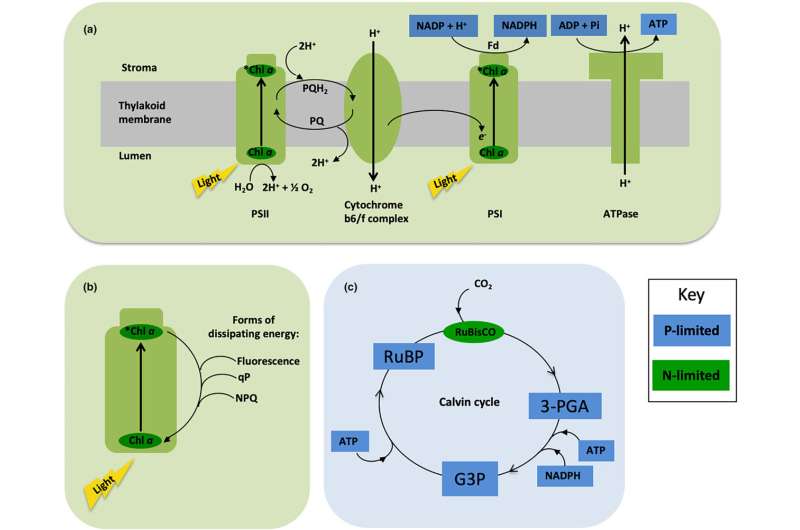This article has been reviewed according to Science X's editorial process and policies. Editors have highlighted the following attributes while ensuring the content's credibility:
fact-checked
trusted source
proofread
Wheat waste: A phosphorus crisis?

Experiments published in Food and Energy Security by scientists at Queen Mary University of London and Royal Botanic Gardens suggest that we are globally wasting huge amounts of phosphorus.
By studying pot-grown wheat plants, they show that wheat uses nitrogen and phosphorus fertilizers at a ratio of 21 atoms of nitrogen to one atom of phosphorus, and any nitrogen or phosphorus outside this ratio is wasted. These findings indicate that significantly reducing phosphorus input would not affect crop yields but would protect biodiversity, cut costs, conserve this vital resource, and improve ecosystem health.
Wheat is a crucial global food crop, providing 20% of human nutrition. Research on pot-grown wheat plants suggests they require nitrogen and phosphorus in a 21:1 ratio. Excess nitrogen or phosphorus is wasted as it does not boost wheat yield. This pattern likely applies to all crops.
Currently, global fertilizer use has N:P ratios of around 2.1:1 to 4.3:1, far exceeding the optimal level. This waste accumulates in soils and water bodies, harming the environment and increasing costs for farmers and consumers.
Unlike nitrogen, phosphorus is a finite resource essential for feeding a growing population. If these findings hold across agriculture, dramatically cutting phosphorus input can benefit farmers, the environment, and society without compromising yields.
Professor Andrew Leitch from Queen Mary University of London said, "Rising fertilizer consumption is driving up food prices. Our research shows we're using far too much nitrogen relative to phosphorus, leading to waste, pollution, and higher costs."
Professor Mark Trimmer from Queen Mary University of London added, "Fertilizer runoff is devastating our environment. Reducing phosphorus inputs can significantly improve biodiversity and ecosystem health without affecting crop production."
Dr. Ilia Leitch at Royal Botanic Gardens Kew commented, "Forty-five percent of flowering plant species are threatened. Excess fertilizer is a major factor. Our study can help farmers reduce fertilizer use, saving money and the environment."
More information: S. S. Marques da Silva et al, Nitrogen and phosphorus interactions at a 21 nitrogen:1 phosphorus Redfield‐like ratio impact growth and seed yield in wheat (Triticum aestivum L.), Food and Energy Security (2024). DOI: 10.1002/fes3.564
Provided by Queen Mary, University of London





















